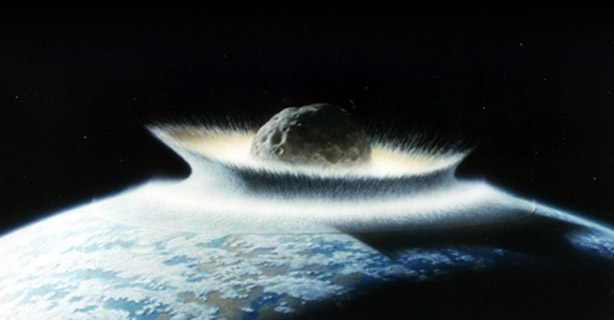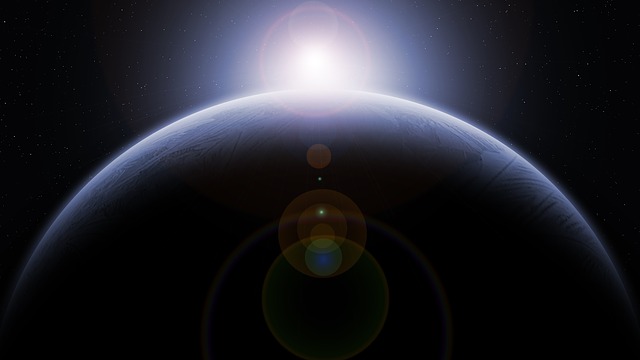Moon-creating collision may have stripped up to 60 percent of ancient Earth’s atmosphere
10/06/2020 / By Virgilio Marin

Ancient Earth may have lost as much as 60 percent of its atmosphere as a result of the collision that created the moon, suggests a recent study published in the Astrophysical Journal Letters.
An international team of researchers ran hundreds of computer simulations that each showed the effects of an impactor with a unique set of characteristics on a planet like Earth. These simulations indicated the amount of proto-Earth’s atmosphere that was possibly lost after colliding with a Mars-sized planetesimal.
The study could help scientists develop innovative ways of predicting atmospheric loss caused by a collision with different impactors. In turn, these new tools can be used to study the moon’s origins, as well as investigate cosmic impacts in the solar system and exoplanetary systems light-years away.
Earth likely lost a lot of atmosphere after collision
The study came at the heels of a previous study led by Durham University in the U.K., which posited that enormous impacts during the late stages of a planet’s formation could have wide-ranging effects on a young planet’s atmosphere. That study’s researchers said that the impactor’s mass, size, speed and angle upon impact are key considerations when calculating collision outcomes. For the latest research, the team adjusted for those four variables, besides the impactor’s density and whether it was made of iron, rock or both.
“We ran hundreds of different scenarios for many different colliding planets, showing the varying impacts and effects on a planet’s atmosphere depending upon a number of factors,” said lead author Jacob Kegerreis, a professor at the Institute for Computational Cosmology at Durham University.
Previous research suggested that the moon likely formed following a collision between young Earth and a giant impactor estimated to be the size of Mars around 4.5 billion years ago. The simulations showed that Earth might have had lost anywhere between 10 to 60 percent of its atmosphere due to that collision.
But it could also go the other way: A collision with a giant impactor that had a thick atmosphere and traveled at a slower rate could add a lot of atmosphere to a planet.
“This major suite of planetary simulations also sheds light on the role of impacts in the evolution of Earth-like exoplanets,” said co-author Luis Teodoro, a professor at the School of Physics and Astronomy at the University of Glasgow.
While the study couldn’t directly explain how the moon was created, the simulations could provide crucial insights into the origin of Earth’s closest celestial neighbor, added Kegerreis.
Theories for the moon’s formation
The most widely accepted theory for the moon’s formation is the giant-impact theory. The massive collision was said to have flung an enormous amount of debris that collected in an orbit around Earth and accreted into what’s now known as the moon.
The Apollo mission of the late 1960s was key to the development of the hypothesis. The crew brought home samples of lunar soil, which confirmed that Earth and the Moon share some remarkable chemical and isotopic similarities. This suggested that they have a linked history, according to Sara Russell, a planetary scientist with the Natural History Museum in London. (Related: Theia and proto-Earth: Did a planetary collision result in life on Earth over 4.4 billion years ago?.)
Before the Apollo mission, scientists believed that the moon was either a wandering body that got captured by Earth’s gravity or was created along with Earth at the time of the planet’s formation. But the samples from the mission eroded those theories. The capture theory presupposed that Earth and the moon would have a completely different composition, while the latter theory suggested they were made of almost the same material.
“In the seventies and eighties there was a lot of debate which led to an almost universal acceptance of the giant impact model,” said Russell.
Cosmic.news has more on the giant-impact hypothesis.
Sources include:
Tagged Under: ancient earth, Apollo mission, cosmic, Earth's atmosphere, giant impact hypothesis, Moon, planetary collisions, proto-Earth, simulation, Space, space research
RECENT NEWS & ARTICLES
COPYRIGHT © 2017 REAL SCIENCE NEWS




















